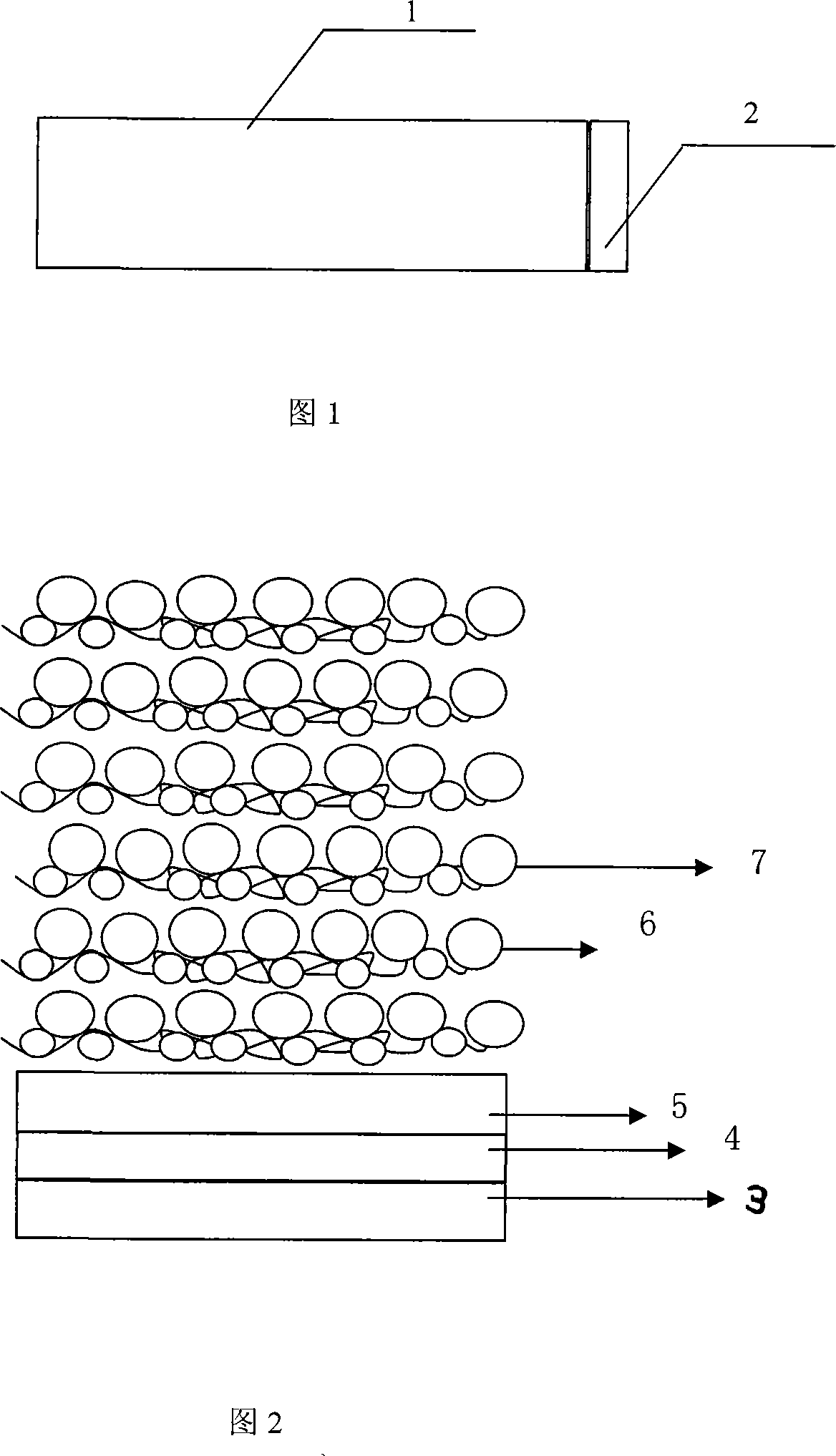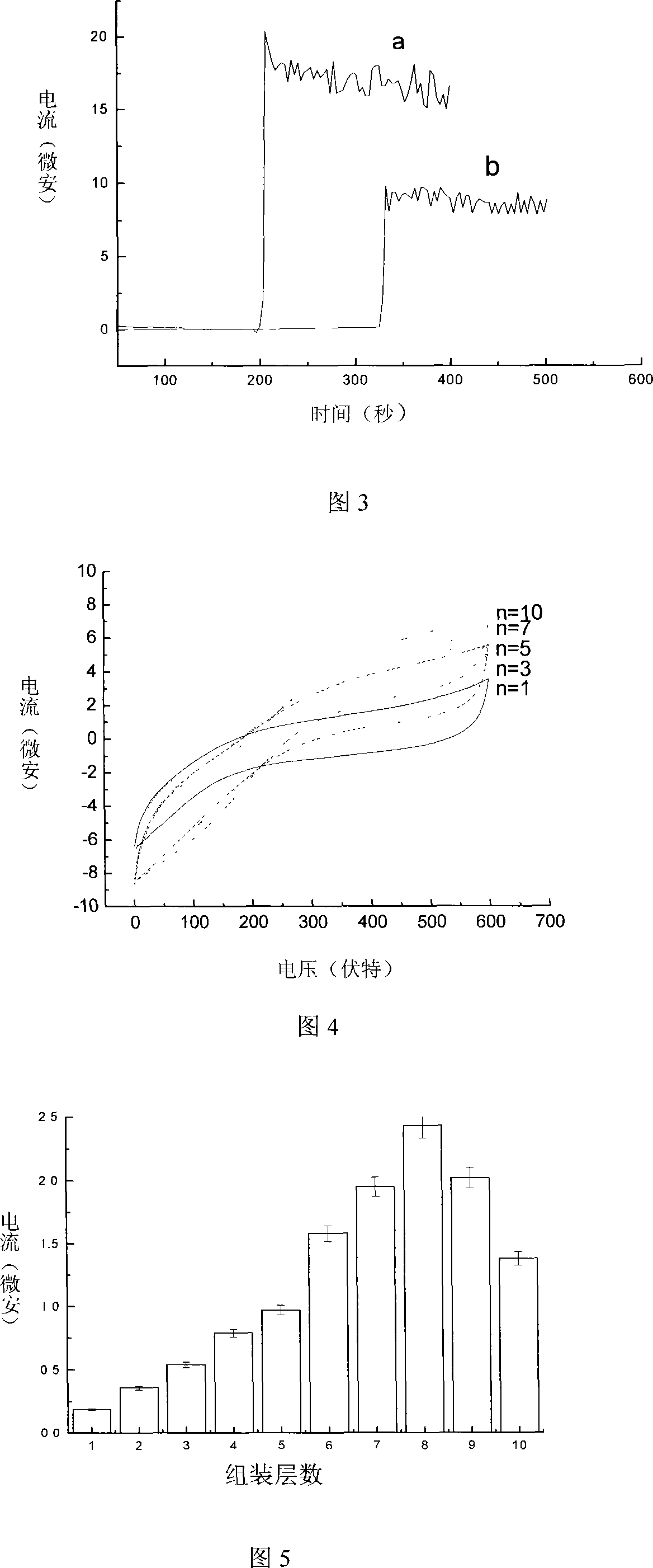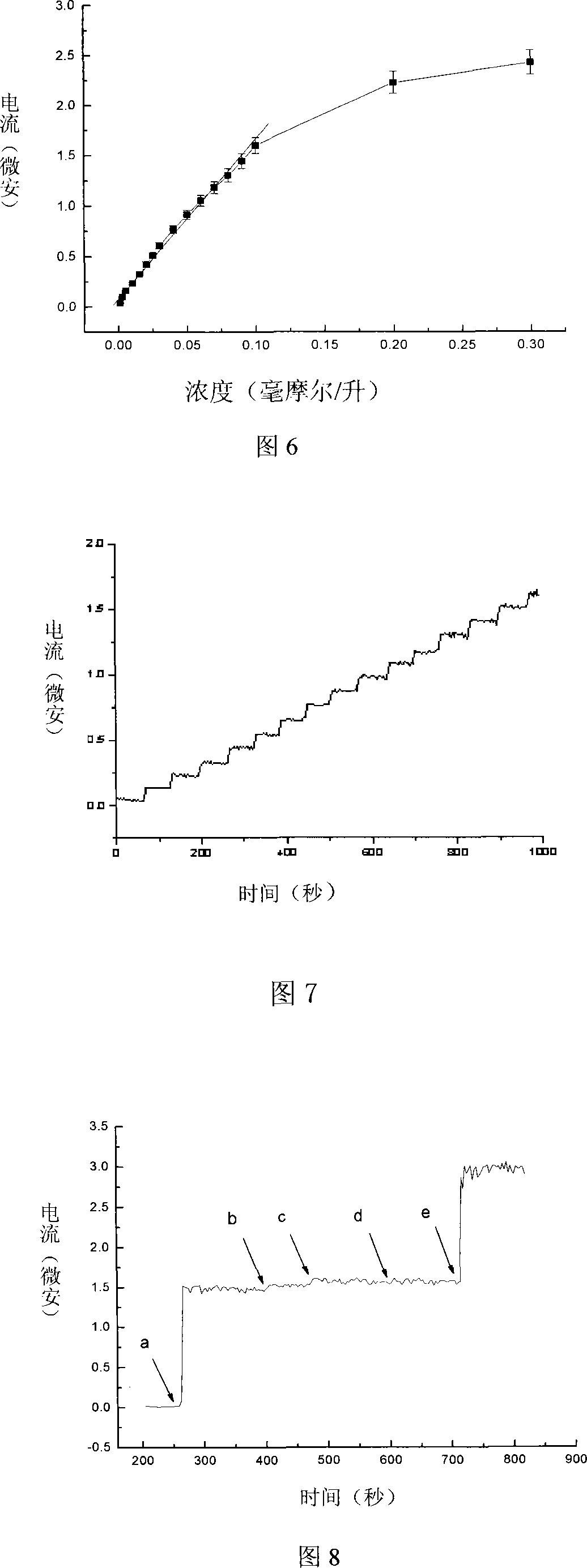Manufacturing method of biology enzymic electrode used for detecting pesticide residue
A technology for pesticide residues and production methods, which is applied to measurement devices, material analysis by electromagnetic means, instruments, etc., can solve the problems of insufficient enzyme fixation, weak anti-interference ability, and poor repeatability, and achieves improved response sensitivity, anti- The effect of strong interference ability and improved sensitivity
- Summary
- Abstract
- Description
- Claims
- Application Information
AI Technical Summary
Problems solved by technology
Method used
Image
Examples
Embodiment 1
[0049] A rod-shaped electrode carrier (1) with a square cross-section is made of an organic insulating material, and gold (3) is coated on the cross-section of its lower end to make a rod-shaped working electrode as shown in FIG. 1 .
Embodiment 2
[0051] Except that gold is replaced by carbon, and the cross section is rectangular, other is the same as embodiment 1.
Embodiment 3
[0053] Except that gold is replaced by platinum, and the cross section is circular, the others are the same as in embodiment 1.
PUM
| Property | Measurement | Unit |
|---|---|---|
| concentration | aaaaa | aaaaa |
| Sensitivity | aaaaa | aaaaa |
Abstract
Description
Claims
Application Information
 Login to View More
Login to View More - R&D
- Intellectual Property
- Life Sciences
- Materials
- Tech Scout
- Unparalleled Data Quality
- Higher Quality Content
- 60% Fewer Hallucinations
Browse by: Latest US Patents, China's latest patents, Technical Efficacy Thesaurus, Application Domain, Technology Topic, Popular Technical Reports.
© 2025 PatSnap. All rights reserved.Legal|Privacy policy|Modern Slavery Act Transparency Statement|Sitemap|About US| Contact US: help@patsnap.com



